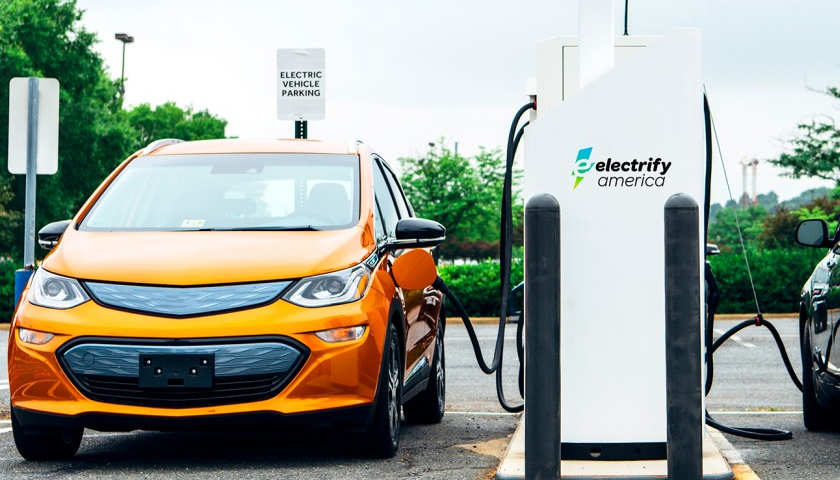Walmart has announced that suppliers have reported reducing more than 20 million metric tons (MMT) of greenhouse gas emissions in the global value chain, as part of the company’s Project Gigaton initiative. Walmart launched Project Gigaton last April, seeking to work with suppliers to reduce emissions from the company’s value chain by a gigaton, or one billion metric tons, by 2030. The emissions reduction progress was shared at Walmart’s annual Sustainability Milestone Summit, where expanded commitments on solar and wind power, as well as electric vehicle (EV) charging stations, were also discussed.
“In its first year, Project Gigaton has helped to inspire action that has led to the avoidance of millions of metric tons of greenhouse gas emissions and has expanded into an international campaign that includes the participation of several hundred suppliers,” said Kathleen McLaughlin, senior vice president and chief sustainability officer for Walmart. “The early success of Project Gigaton parallels ongoing progress in our operational efforts that seek to double our U.S. renewable energy use and expand our customer electric vehicle charging hubs to retail outlets across more than 30 states.”
With the recent expansion of Project Gigaton in China and the U.K., more than 400 suppliers with operations in more than 30 countries have joined the program. Suppliers can commit to reductions in any of six pillars that include energy, agriculture, waste, packaging, deforestation and product use. Approximately 85 percent of the Project Gigaton emissions reductions reported by suppliers have focused their efforts on the energy and product use pillars, with projects devoted to areas such as renewable energy investments and the development of more efficient products.
“This annual milestone marks a pivot point for Walmart and 400 of its suppliers to share solutions and lessons learned. The next step is to deepen commitments that unlock the potential of this platform,” said Carter Roberts, president and CEO, World Wildlife Fund (WWF). “We need collaborative initiatives like Project Gigaton and We Are Still In. With sufficient goals and results they can help define our country’s ability to build a sustainable future. And they also shape the world’s understanding of our commitment to solving climate change.”
“With Project Gigaton, Walmart is raising the bar for innovation and collaboration across its supply chain,” said Fred Krupp, president of Environmental Defense Fund. “In Project Gigaton’s second year, we hope to see even more Walmart suppliers setting targets based in science, ensuring that business, people and nature thrive.”
A highlight from the summit was a commitment made by Project Gigaton participant, Procter & Gamble (P&G), to cut 50 MMT of emissions from its operations and value chain by 2030. P&G will achieve this through inviting customers to join the Tide #QuickColdPledge, switching to quick and cold laundry cycles to use less water, 80 percent less energy and create 40 percent fewer emissions in every load, as well as committing to source 100 percent renewable electricity in its North American operations by 2020.
“Walmart’s Gigaton goal is ambitious and demonstrates the impact we can have when we collaborate on a common goal,” said Carolyn Tastad, Group President of North America, P&G. “At P&G, we share Walmart’s commitment to making measurable progress and a positive impact across our brands, supply chain, society and our employees.”
Another key announcement made at the summit is that Walmart plans to more than double its EV charging station sites with the addition of several hundred charging stalls across its operations in 34 states. This expansion will bring Walmart’s total number of charging units to well over 1,000 when complete, making Walmart one of the nation’s leading EV charging station hosts and creating a national grid of electric vehicle charging availability at hundreds of Walmart stores and Sam’s Club locations.
Walmart’s EV charging station expansion will provide customers with added convenience as several of the new units will feature super-fast chargers that can charge a car in between 10 to 30 minutes. This initiative is part of Walmart’s continuing evolution to help busy families and create a more resourceful and enjoyable one stop retail experience that allows customers to charge their vehicles as they shop.
Expanding Renewable Energy Use
Walmart also discussed recent progress in renewable energy that will move it closer toward its 2025 goal of being supplied globally with 50 percent renewable energy.
As a result of several new solar and wind projects, Walmart plans to more than double the amount of renewable energy it uses in the U.S. and increase the percentage of global electricity needs supplied by renewable sources above the current 28 percent.
The new initiatives include expansion of on-site solar energy installments. Walmart, already the leading company in the U.S. for number of locations utilizing on-site solar energy, plans to add an additional 130 sites which will bring its total to approximately 500 locations across 22 U.S. states and Puerto Rico, surpassing its 2014 goal to double its onsite solar use by 2020.
Walmart recently reached an agreement to acquire renewable energy that will enable the building of two new large-scale wind farms developed by Geronimo Energy and Engie. The 1.26 billion kWh produced annually from this arrangement will be equivalent to the majority of the electricity needed to power Walmart stores, Sam’s Clubs and distribution centers across seven Midwestern states.
These new wind energy deals come only weeks after the retailer announced that most of the renewable energy certificates (RECs) generated from a new solar farm in Alabama will supply 150 million kWh each year to the retailer, covering 40 percent of the company’s electricity needs in the Alabama Power service area.
Additionally, earlier this month Walmart announced that it had successfully collaborated with Google and Georgia Power on an initiative that will result in the retailer obtaining 182 million kWh of additional renewable energy annually. Once the new Georgia Power arrangement is operational, approximately 34 percent of Walmart’s power demand for its retail locations served by Georgia Power will come from the renewable sources in the program.
Cumulatively, these new solar and wind projects will provide over 1.6 billion kWh of renewable energy annually to Walmart, equivalent to the average annual electricity use of over 139,000 homes and thus doubling Walmart’s renewable energy use in the U.S. and moving it closer towards its 2025 goal of being supplied with 50 percent renewable energy.



